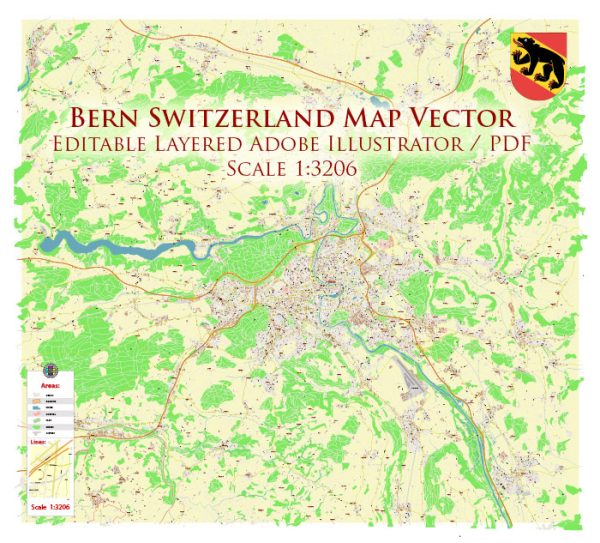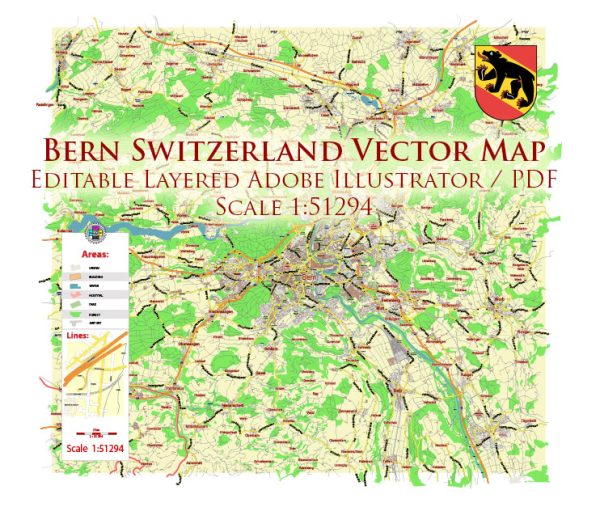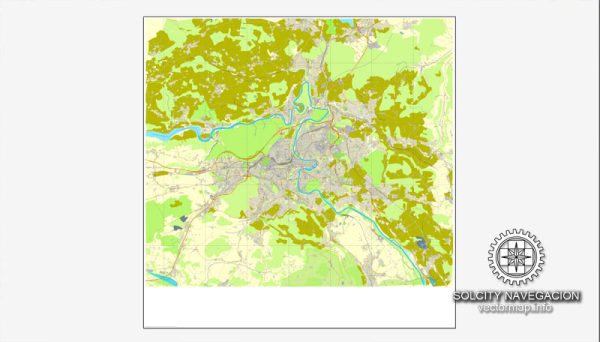Bern, the capital of Switzerland, has a rich history of urban development that spans over several centuries. The city’s history is marked by its well-preserved medieval Old Town, which is a UNESCO World Heritage Site, and its strategic location along the Aare River.
- Foundation and Medieval Origins: Bern was founded in the 12th century (officially in 1191) by Duke Berthold V of Zähringen. The city’s name is derived from “Bern,” which means “bear” in Old High German. According to legend, Duke Berthold vowed to name the city after the first animal he encountered on a hunting expedition, which happened to be a bear. As a result, the bear became a symbol of Bern, and you can still find bears in the city today.
- Development of the Old Town: Bern’s Old Town is one of the best-preserved medieval townscapes in Europe. The city’s layout is characterized by a system of parallel streets, known as “Lauben,” which were constructed with covered arcades. These arcades provided shelter from the elements and contributed to the city’s unique architectural charm. The Old Town also features well-preserved medieval buildings, churches, and towers.
- Growth and Prosperity: In the Middle Ages, Bern became an important trade and administrative center in Switzerland. It was strategically located on the trade routes between northern and southern Europe. The city’s wealth and influence grew over time, and it became a hub for politics, trade, and culture.
- The 16th Century Reformation: Bern played a significant role in the Swiss Reformation. In 1528, the city officially adopted the Protestant faith, and this event marked a turning point in Bern’s history, leading to religious and political changes that continue to influence the city today.
- Modernization and Expansion: In the 19th century, Bern underwent urban modernization and expansion. The medieval walls that once enclosed the city were dismantled, allowing the city to grow beyond its historic core. New districts and infrastructure were developed to accommodate the city’s growing population.
- 20th Century and Beyond: In the 20th century, Bern continued to evolve as a political and cultural center. It is home to the Swiss government and various international organizations. While the city has embraced modernity, it has also remained committed to preserving its historical heritage, ensuring that the Old Town and its unique architectural features are maintained.
Today, Bern is a city that beautifully combines its medieval roots with the demands of the modern world. The well-preserved Old Town, with its stunning architecture and charming streets, stands as a testament to the city’s rich history and serves as a major tourist attraction. Its blend of historical significance and contemporary relevance makes it a unique and captivating place to visit and explore.





 Author: Kirill Shrayber, Ph.D.
Author: Kirill Shrayber, Ph.D.